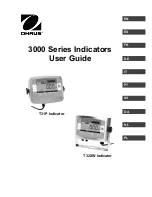
aleo
aleo solar Deutschland GmbH
| Osterstraße 15| 26122 Oldenburg | Germany | service@aleo-solar.com
installation instructions Edition 01/2012 en-GB-Intl (120508b)
Page 21/60
5.12.5.
Conductor cross-sections
WARNING
Always use conductor cross-sections that
have a safe ampacity for the highest short-
circuit current of the module string. Infor-
mation about this can be found in the
technical literature ([36]).
With a parallel circuit of module strings,
please note the corresponding increased
short-circuit current.
An environment with strong reflections (e.g.
snow, areas of water) can increase the short-
circuit currents.
As a rule of thumb, for the assumed maxi-
mum current, multiply the short-circuit
current under standard test conditions (STC)
by a safety factor of 1.25 (see Appendix A,
'Parameters of aleo Modules'). Regional
regulations may stipulate multiplying by a
different factor.
For the cabling of a single module string
4
with an inverter,
please use copper cables with the following minimum cross-
section:
For a simple cable length of under 40 m:
conductor cross-section at least 4 mm²
(AWG 11);
For a simple cable length between 40 m and 75 m:
conductor cross-section at least 6 mm²
(AWG 9).
Special cases
In the following cases, please do a project-specific calculation:
for a simple cable length of more than 75 m,
with the use of string combiner boxes for parallel
connections of module strings.
Matching additional components
After determining the necessary conductor cross-sections,
please ensure that the intended additional components (e.g.
connectors, jacks, clamps) are suitable for these cross-
sections.
Conductor cross-sections in parallel connections
Parallel switching of individual module strings can, in some
situations, reduce the number of required inverter inputs.
In this case, not only plan sufficient conductor cross-sections
for the higher currents, but also for the additional components
that may be necessary for parallel connections, such as string
diodes and/or direct current string fuses for every module
string. Details on this can be found in the following chapters.
4
This information is only valid for the cabling of a single
module string, not for parallel connection of module strings.
5.12.6.
String diodes
Reasons for string diodes
NOTICE
The installation of string diodes is necessary in the
following cases:
Numerous module strings are connected in parallel
and occasional shadowing of individual module
strings is expected:
The diodes are necessary because the
shadowing of a module string can cause a
reverse current in the shadowed string. The
internal module bypass elements only work for
currents in the operational direction.
Therefore, this situation can cause an
impermissibly high power loss in a single
module. By installing string diodes, possible
module over-heating and damage can be
prevented.
The photovoltaic generator is directly connected to
a battery:
The diodes are necessary because they
prevent discharging of the battery via the
photovoltaic generator at night.
The photovoltaic generator is connected directly to
an inverter without reverse current protection:
The diodes are necessary because they
prevent possible damage to the modules.
If the above points are not observed, there is a danger
that operation will damage the modules or their bypass
elements.
According to aleo solar, the installation of string diodes is:
Generally
recommended for parallel connections
with
two
module strings,
Essential
for parallel connections with
three or
more
module strings
G
ID A
S
033
c















































